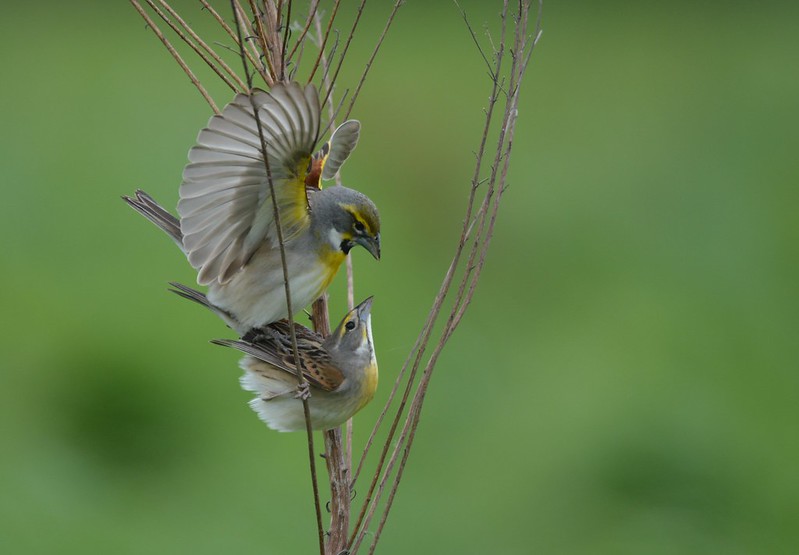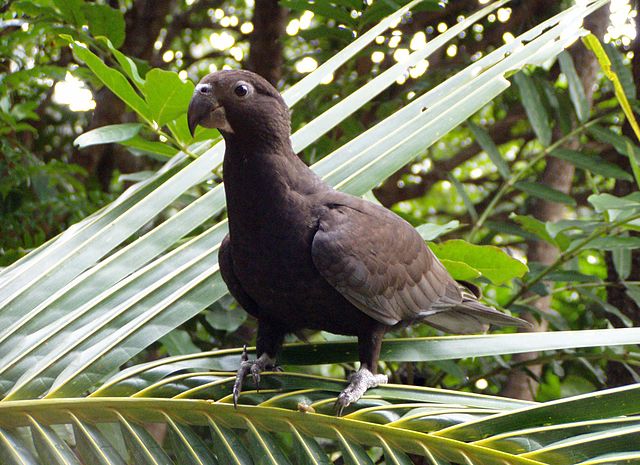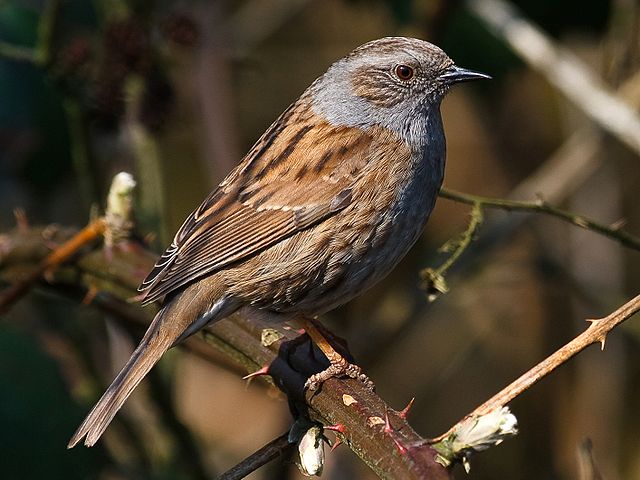Sperm Competition in Birds
The Microscopic Race Inside Promiscuous Females
Last time I discussed sperm competition in mammals. Naturally, (eutherian) mammals aren’t the only group of animals in which sperm competition takes place. One thing that connects the two groups of animals in terms of sperm competition are the proxies that predict its intensity: high level of extrapair paternity and large testicles. Also, just as in wood mice, sperm competition in birds has a stabilizing effect on sperm length within and between males. There are, however, key differences that make sperm competition in birds and mammals very different.
Female birds possess organs that allow them to store sperm for a certain amount of time before they put it into use. They’re usually called sperm storage tubules (SSTs), and sperm can survive inside of them for weeks. This changes the game for sperm competition as we know it from mammals, because in birds with SSTs, sperm competition is no longer about reaching and fertilizing the egg(s) first, but about reaching and filling the SSTs before the rivals’ sperm does.
As we’re already used to it when we discuss ecology and evolution, the way in which species react to sperm competition varies in different contexts, so there’s no single recipe on how to achieve reproductive success. Also, sex in birds is very different from sex in mammals because 97% of birds don’t even have a penis! Most birds mate by what we call a ‘cloacal kiss’ – the male presses his cloaca to the female’s cloaca and transfers sperm into her in a blink of an eye. Even the penises of the birds who have one work on a completely different basis than mammalian penises (read my article about those 3% here). In this article, I focus on some of the 97% of birds.
In 1992, James V. Briskie and Robert Montgomery studied sperm competition in 20 species of passerines in 7 subfamilies and found a positive correlation between the size of SSTs and sperm length and a negative correlation between overall SST numbers and sperm length. What does this mean? It seems that sperm length is important when the females has a few large SSTs, but with a growing number of SSTs it’s better to have a lot of smaller sperm.
As you already know if you read my article about sperm competition in mammals, larger sperm swims faster (because of enhanced thrust) but in birds with SSTs, larger sperm means something more: filling up more space inside the tubule, hence blocking the sperm of competitors from entering it.
But the authors found something else as well – SST size of closely related species is substantially varied. They think that different selective pressures affect sperm length and SST size. That’s not surprising: in layman’s terms, what evolution does to sperm length is based on what’s beneficial for the male, whereas what evolution does to SSTs is based on what’s beneficial to the female.
Large SSTs can hold a greater amount sperm, so let’s consider that one SST holds sperm of various rivaling males. There’s only one opening, so the last sperm to enter will be the first to leave, right? This sperm should, then, be in an advantageous situation – it’ll have a head start on the way to the egg. If this is true, females could control who fathers the next generation of her chicks – the last male she’ll mate with should be the one she ultimately prefers.
So, the larger her SSTs are, the more control she has over them. Males, on the contrary, shouldn’t be ok with this: if they’re not the last one to mate with a given female, does it mean a whole bunch of their sperm was completely wasted? That’s a lot of energy lost, so evolution must react - their sperm must become big enough to fill in the entire tubule. Then, the first one to get in is also the last and only one to get in, simply because there’s no more space inside the SSTs. That is the arms race between sexes.

Dickcissels (Spiza americana) mating. Photo credit: Andy Reago & Chrissy McClarren
Larger sperm, naturally, don’t only fill out the entire tubules, but also reach them sooner than smaller sperm. That’s another way to explain why the sperm of species in which females have fewer SSTs are larger than the sperm of species with more SSTs.
A 1997 study based on 21 passerine species found a positive correlation between extra-pair paternity and sperm length, and in a 2005 study based on 1010 species of birds, scientists have found that colonially breeding birds and precocial birds have larger testicles than solitary birds and those with altricial chicks.
Most studies on sperm competition in birds focused on temperate passerines, simply because they’re easy to study and also, quite frankly, life histories of tropical birds are very different to those that are found in the temperate zone, which led some scientists to believe that sperm competition in the tropics could be very limited. How about some evidence?
A comparative analysis of tropical and temperate birds conducted in 2012 found no evidence that tropical species had a universally reduced risk of sperm competition, suggesting that sperm competition may, indeed, occur in tropical species. Inspired by their findings, scientists at the Max Planck institute of Ornithology decided to study non-passerine tropical birds - parrots - and found that sexually dichromatic (sexes of different colors) and gregarious parrots have longer sperm and more intensive sperm competition.
Interestingly, one of the species that they found to have the longest sperm, the Vasa parrot (Coracopsis vasa), has a penis-like cloacal structure that allows it to attach itself to the female and make the copulation longer, which just shows that, truly, sperm competition in this species is no joke.
Like passerine species, parrot species with more intensive sperm competition tend to have little variability in sperm length both on the within- and between-male level. It seems that there’s an optimal length for sperm that aids success in fertilization.
Finally, there’s just one more thing some birds, namely the dunnock (Prunella modularis), tend to do to increase paternity. It’s called 'cloaca-pecking' and the term is self-explanatory. As many birds do, the male of this species will engage in a complicated display to attract a female. As part of it, he’ll peck at the female’s cloaca, which makes her release the sperm that was deposited by her previous mate, making space for the new mate to deposit his own.
Post-copulatory choice represents a fascinating world where the things that are truly important aren’t visible with the naked eye. It's clear that sperm competition in birds is much less violent than it is in mammals.

Photo credit: Leoboudv
| Common name: | Greater Vasa parrot |
| Scientific name: | Coracopsis vasa |
| Phylum: | Chordata |
| Class: | Aves |
| Order: | Psittaciformes |
| Family: | Psittrichasidae |
| Scientific reading: |

Photo credit: Karsten
| Common name: | Dunnock |
| Scientific name: | Prunella modularis |
| Phylum: | Chordata |
| Class: | Aves |
| Order: | Passeriformes |
| Family: | Prunellidae |
| Scientific reading: |